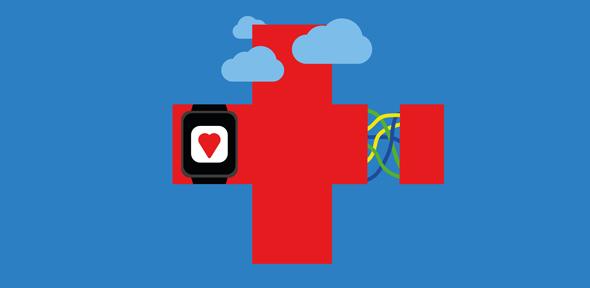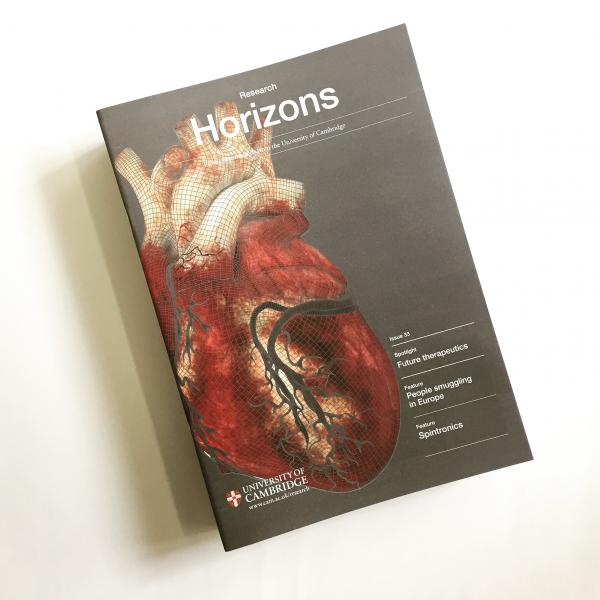
It used to be all about fleabane for bites from venomous beasts, mugwort to induce and ease the pain of labour and boiled bedstraw to stimulate clotting. According to Nicholas Culpeper in his 1652 book The English Physitian, “a man may preserve his Body in Health; or cure himself, being sick, for three pence charge, with such things only as grow in England”.
Prescient words, in some respects – today it’s still all about giving the right patient the right drug, at the right dose at the right time, but it’s called precision medicine.
In fact, herbal remedies and small-molecule pharmaceuticals have dominated therapeutic medicines since Culpeper’s time, before being joined in the 1980s by ‘biologics’ when it became possible to build new forms of proteins, hormones, receptors and monoclonal antibodies after the DNA code was cracked in Cambridge in 1953.
Science moves fast and we now stand at the threshold of not one but several step changes. New understanding of the structures of cells and systems biology is pioneering the use of human and microbial cells as therapeutic agents. Meanwhile, novel bioelectronic medicines or ‘electroceuticals’ are shifting the therapeutic approach away from traditional medicines into optics, electronics, instrumentation and software. What will these and other developments in areas such as immunotherapy and nanotherapy mean to medicine over the next hundred years? And what’s taking place now in Cambridge to help this happen?
There seems little doubt that with increased genetic knowledge, precision medicine will define the 21st century. The development of massively parallel DNA sequencing by the Department of Chemistry moves us closer to the prospect of sequencing one billion kilobases per day per machine. Genomic information and computational approaches will refine diagnoses, stratify cancer into subtypes, guide personalised treatments and improve the efficiency of clinical trials.
Meanwhile, cell-based technologies provide exquisitely selective delivery agents that are naturally able to perform therapeutic tasks. In Cambridge, progress in regenerative medicine promises benefits for replacing human cells, tissues or organs; and the use of stem cells to manage and treat diabetes, degenerative nerve, bone and joint conditions, and heart failure.
The convergence of information technologies like augmented reality, cloud-based applications, artificial intelligence and deep learning in digital healthcare will play an increasing role in medical decision support, robotic nursing and surgery, sensors and diagnostics, and so on.
So-called beyond-the-pill services, such as wearables, apps, medical tattoos and point-of-care sensors will offer consumers digital devices for monitoring health and compliance, although issues such as privacy, data integrity and cybersecurity remain concerns to be resolved satisfactorily in the ‘internet of people’.
Research into these key future technologies is being conducted in the Departments of Engineering, Materials Science and Physics, and the Centre for the Physics of Medicine. Meanwhile, the newly established Alan Turing Institute and the Leverhulme Centre for the Future of Intelligence bring world-leading expertise in big data, computer science, advanced mathematics and artificial intelligence.
How is the pharmaceutical industry responding to these shifting patterns in modern medical treatments? Global research-based companies have suffered from the downturn in the global economy, the demise of the blockbuster era and the rise in specialist markets. Industry is adapting by placing more emphasis on new therapeutic modalities and repurposing existing drugs, as well as strengthening academic–pharma collaborations at earlier stages of the drug discovery process.
The Milner Therapeutics Institute, due to open in 2018, will foster close collaborative interactions between academia and industry to accelerate medical advancement via an ‘open borders’ paradigm. So too will Apollo Therapeutics, a £40m collaboration between the tech transfer offices of Cambridge, Imperial College London and University College London and three global pharmaceutical industries (AstraZeneca, GSK and Johnson & Johnson) to streamline the academia-to-industry pipeline.
New technologies are likely to change the regulatory, legal and policy environments, and business models. For example, some forms of medicine – like gene editing – are both personalised and curative. How will the costs of research, development and marketing for ‘cures’ be met if the business model is more likely to be a service than a product?
Understanding complex issues such as these will be aided by the networks and convening power established by the Centre for Science and Policy, which coordinates the best scientific thinking to inform public policy, and the Centre for Law, Medicine and Life Sciences, which focuses on the legal and ethical challenges at the forefront of biomedicine. Meanwhile, the Institute for Manufacturing is analysing supply chains, and the Judge Business School is studying the management of innovation and entrepreneurship.

It’s likely that future healthcare will have a different geometry. A complex interplay of patients, industries and service operators will use sophisticated diagnostic tools, digital scrutiny and interpretation using artificial intelligence, and have access to an extensive toolbox of therapeutic approaches, all personalised to the individual patient, and available through a redesigned primary and hospital healthcare environment.
Cambridge is well placed to drive innovation in this highly multidisciplinary therapeutic scenario.
The University has expertise relevant to all stages of the drug discovery, development and manufacturing process, from fundamental biology/chemistry, through drug development and clinical trials, to imaging, safety, delivery, supply-chain management and entrepreneurship.
There’s also large-scale investment in research and infrastructure for tackling disease. Take dementia, for instance: more than £17m awarded by the UK Research Partnership Investment Fund will help build a Chemistry of Health building for chemistry-based research in neurodegenerative diseases. Cambridge also hosts one of three UK Drug Discovery Institutes funded by Alzheimer’s Research UK (ARUK), and is one of five centres that will form the UK Dementia Research Institute, funded by the Medical Research Council, Alzheimer’s Society and ARUK.
Against this backdrop of activity, the Cambridge Academy of Therapeutic Sciences (CATS) has been established to increase the linking of academic research to big pharma, biotech and NHS structures on the Cambridge Biomedical Campus and in the region. The idea is to create a networking, training and enterprise structure that transcends traditional boundaries between clinicians, academics and industrialists, in which fundamental and applied research into diagnostics and therapeutics can flourish and be translated into patient treatments with maximum efficiency.
The time is ripe for this to happen. AstraZeneca’s move to Cambridge, combined with close links with GSK and other big pharma companies, as well as the thriving local biotechnology industrial environment and sister institutes like the Wellcome Trust Sanger Institute, provide substantial impetus to co-develop and co-deliver these programmes.
In fact, one might thank Nicholas Culpeper for his vision for the future of medicine and at the same time upgrade his estimate of ‘three pence charge’ with 36 decades of financial inflation.
Inset image: Research Horizons special issue on future therapeutics.
How will precision medicine define 21st-century therapeutics? What will future healthcare look like? And what actually lies ‘beyond the pill’? Professor Chris Lowe, inaugural Director of the Cambridge Academy of Therapeutic Sciences, takes the long view on the future of therapeutics.

The text in this work is licensed under a Creative Commons Attribution 4.0 International License. For image use please see separate credits above.